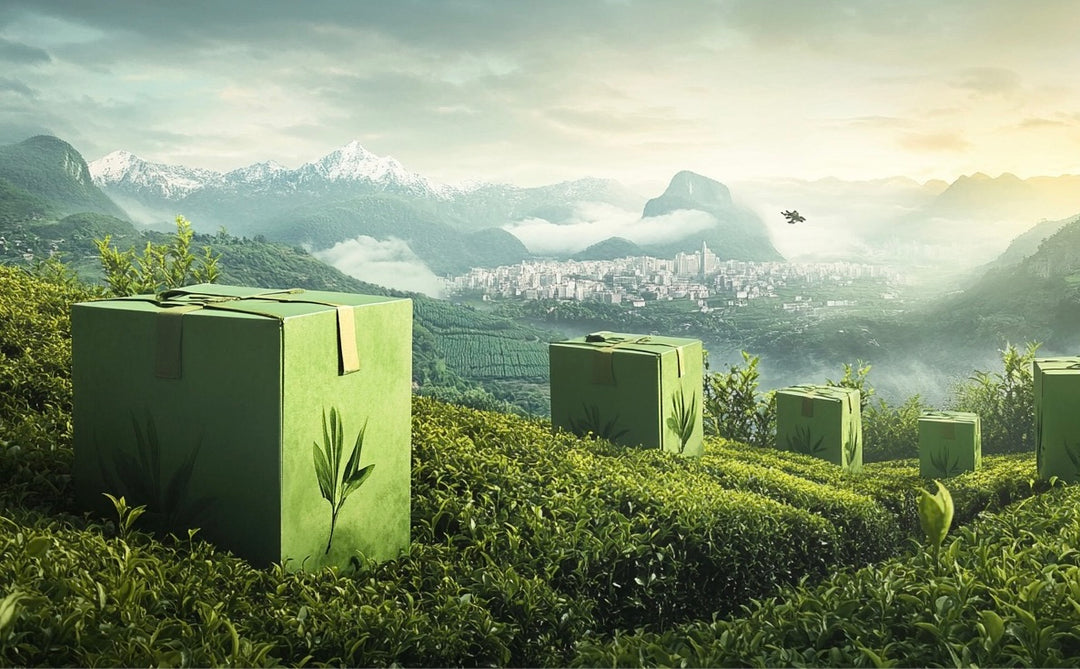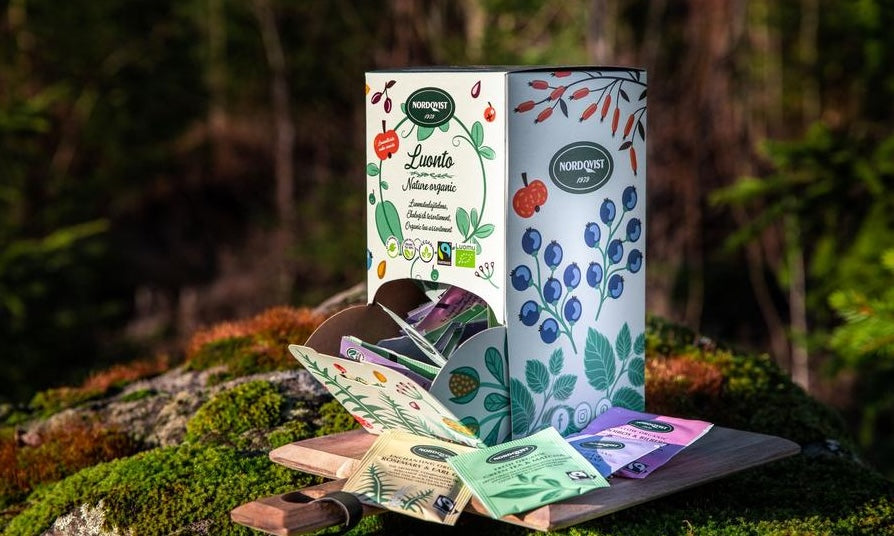Carbon footprint and offsetting emissions
At Nordqvist, we have turned our attention to emissions from tea, how to reduce them and how to offset them. Our aim is to produce and brew delicious tea as ecologically and ethically as possible.
What is a carbon footprint?
The carbon footprint includes all the emissions associated with growing, packaging and consuming the product. They consist of carbon dioxide, but also other greenhouse gases such as methane and nitrous oxide. Other greenhouse gases are converted to carbon dioxide when calculating the carbon footprint to facilitate comparison.
The carbon footprint can be calculated for different actions, services and products, such as a meal eaten or a car journey. The carbon footprint of a single product or activity is the sum of all the greenhouse gases it emits, converted into carbon dioxide. For example, a single cup of tea has emissions from the growing of the tea to the boiling of the water.
Where does the carbon footprint of tea consist of and how can it be reduced?
The most effective way to reduce our carbon footprint is to improve the production. That's why we use a wide range of renewable energy in the production of our products. Hydropower, bio-based fuels and solar panels are all contributing to a greener tea. In fact, our factory in Nurmijärvi, Finland runs entirely on renewable energy.
The carbon footprint of tea is also influenced by its packaging materials. That's why we pay attention to the recyclability of our packaging. Unbleached filters are used as tea bags, and no staples are used to attach them. They can be disposed of as such in organic waste. The outer packaging, on the other hand, is made of cardboard and can be recycled like other cardboard packaging.
In your own kitchen, you can make a big difference to the final carbon footprint of a cup of tea. Surprisingly, boiling water can increase the carbon footprint of tea by half.The key is to boil only the amount of water needed. The easiest way to reduce your everyday carbon footprint is to measure your tea water, for example with your favourite cup.
Using solar energy to make tea
When the new factory in Nurmijärvi opened, we switched to renewable energy. We installed solar panels on the roof to harness sunlight as a source of energy. This way we bring sustainability to every cup of tea on a whole new level!

Our solar panels provide us with useful information. By February 2020, we have already saved more than 16,000 kilos of CO2 emissions and more than 50 trees. The panels absorb solar energy from direct light, but also from scattered radiation. It comes from the atmosphere and clouds, and from the ground when direct sunlight reflects off them. Finland receives a lot of scattered radiation, although there may be less direct sunlight at times.
The reason why we invest in sustainable energy solutions is to make responsibly produced tea available. A consumer cannot make a responsible choice unless a responsible alternative is available. We make sure that the right solution is available - and a delicious tasting one at that.
Emissions offsetting
In addition to reducing your carbon footprint, you can also offset it. Offsetting means promoting zero emissions in addition to changing your own behaviour. For example, offsetting air travel is becoming more common. In practice, offsetting means, for example, funding various climate-friendly projects.
To make Nordqvist a more sustainable tea house, we are offsetting the carbon footprint of tea through Nordic Offset.The carbon footprint of tea and rooibos in the Luonnon Tee -range is fully offsetted.
Through Nordic Offset, we are involved in a waste-to-energy project in Namakkali, India, which converts up to 120,000 tonnes of chicken litter and organic waste from the starch and sugar industries into renewable electricity per year.

The project supports local smallholder farmers in a large tea producing country to implement sustainable agriculture. Unused, bulky waste will be turned into bio-based electricity, preventing methane emissions into the air and providing jobs for local people.
The carbon footprint of tea can therefore be reduced on many levels and in many ways, both at Nordqvist and at home. Take the first step towards a greener path and enjoy a cup of carbon-reduced tea.






